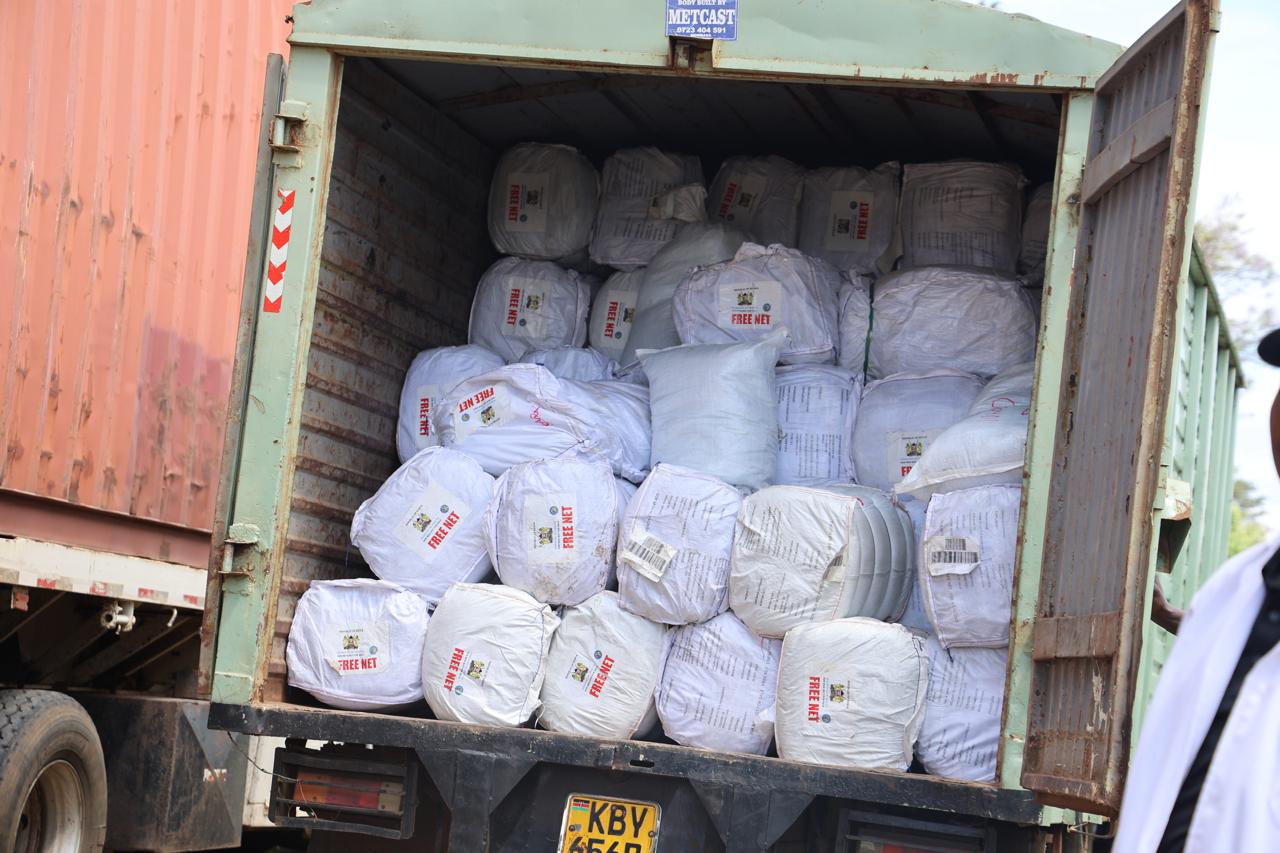
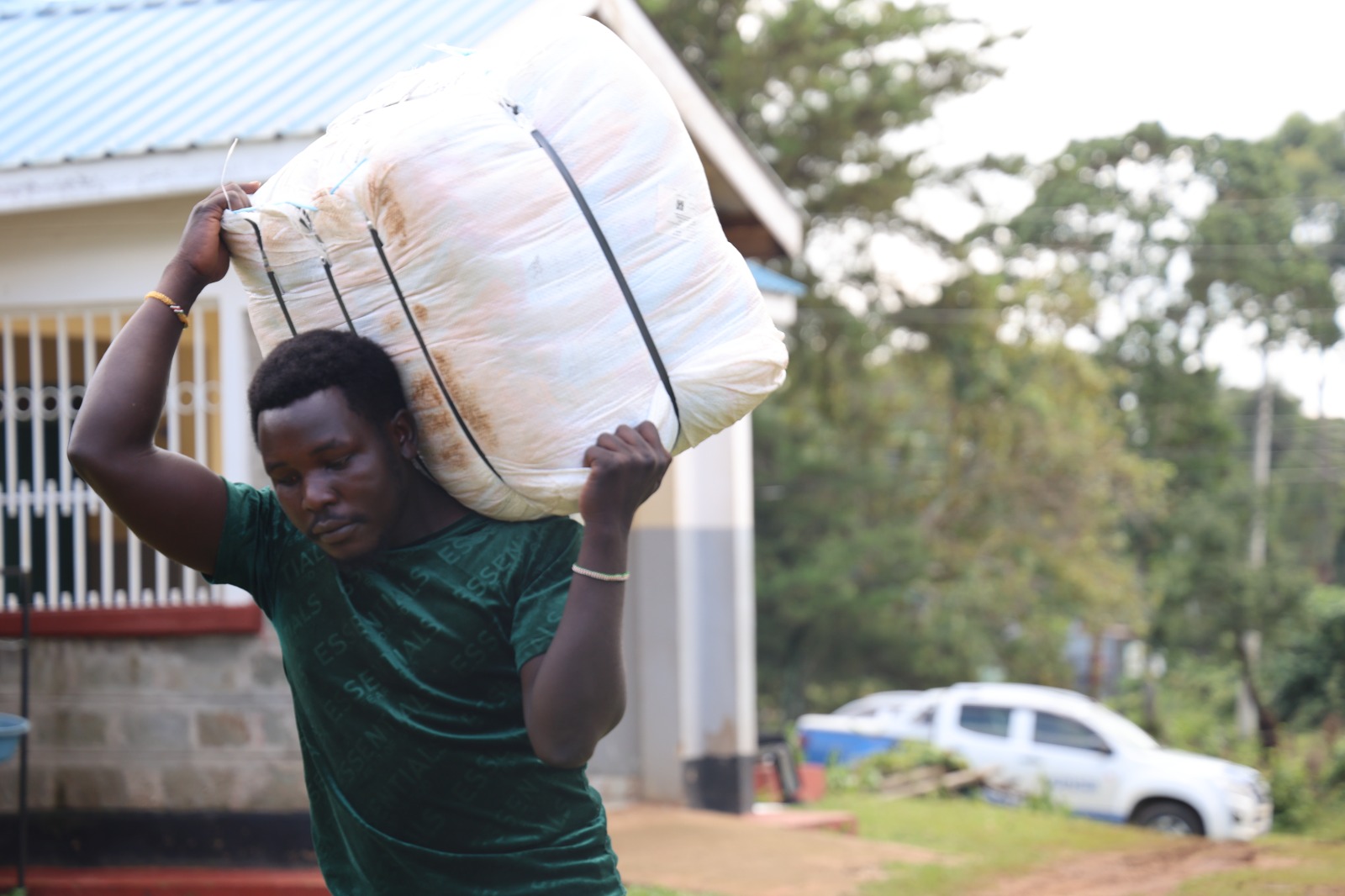
In the race to fight malaria, the Kenya Medical Supplies Authority (Kemsa) has been on the ground distributing free mosquito nets to thousands of locals living in malaria endemic regions.
The exercise, that is funded by the Global Fund, started by digital registration of locals living in 22 malaria-endemic counties.
Ninety percent of those who registered have so far received the nets according to statistics availed by the authority and other partners including county governments that were in the list of beneficiaries.
But what happens to the nets that were not collected by the person who registered? According to Dr. John Aduda, Quality Assurance Manager at Kemsa, all nets that were not picked are being rerouted back into the system before being channeled to other deserving Kenyans.
This process of collecting the Long-Lasting Insecticidal Nets (LLINs) and ensuring there is proper documentation and verification, according to Dr Aduda, is referred to as reverse logistics.
“The nets that are left behind at distribution points are collected by both the county and national teams. Kemsa has been instrumental in mopping up these nets from county stores and transporting them to the central office for redistribution to counties like Kericho and Nandi,” Aduda said.
Aduda explained that reverse logistics plays a crucial role in ensuring accountability as well as delivery of the commodity to another vulnerable person.
This reverse logistics initiative is being undertaken as a collaboration between Kemsa, the National Malaria Control Programme, the county governments as well as national administration including chiefs.
This distribution is part of a broader campaign by Kemsa aimed at distributing 10.9 million nets across counties where the disease continues to pose a serious health threat.
The programme is funded by the Global Fund and implemented under the Malaria Control Programme (NMCP), in collaboration with the President’s Malaria Initiative.
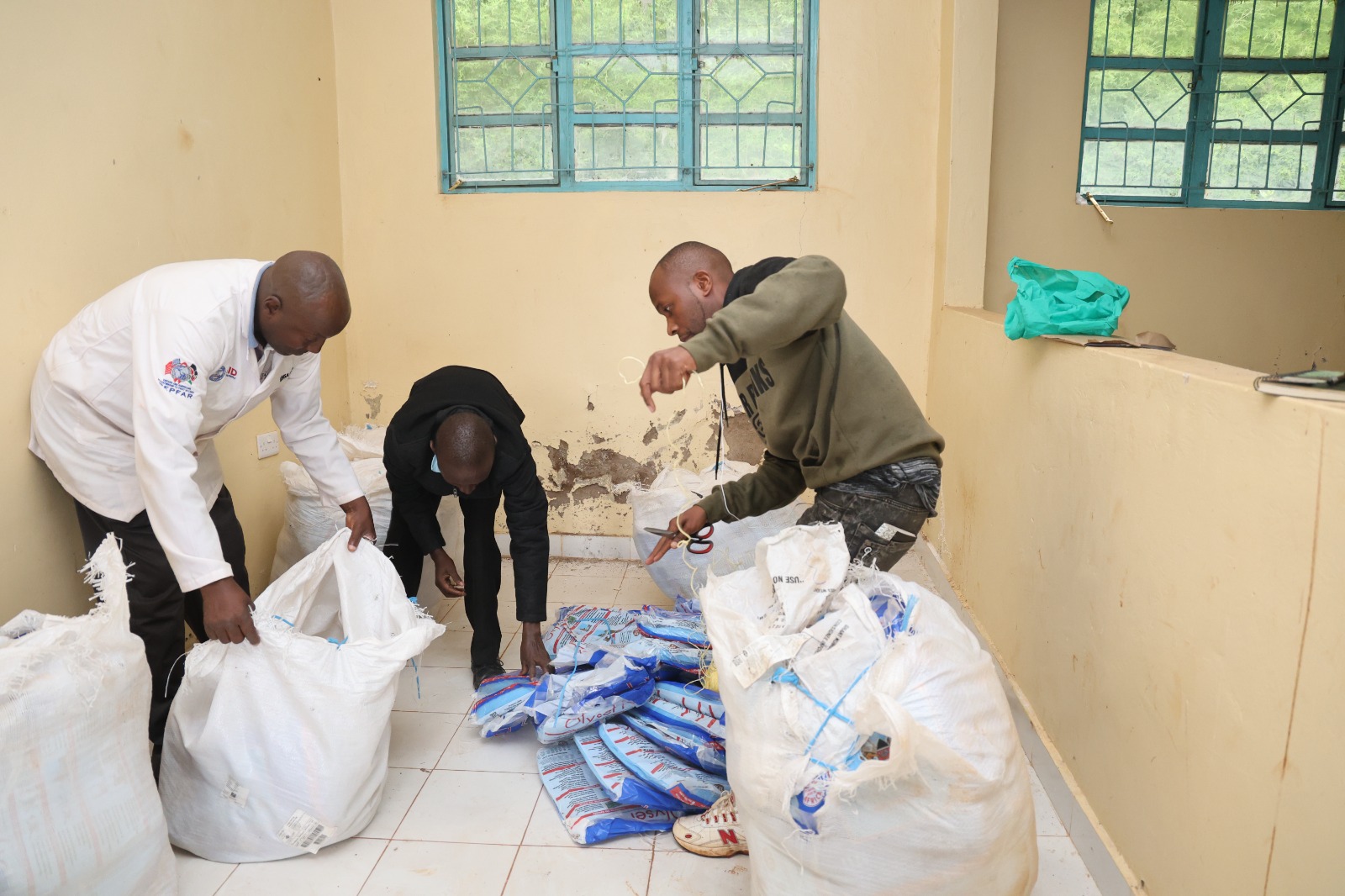
So far, the uncollected nets have been pulled back
from Mombasa, Kisii, and Kwale counties. These regions received the nets mid
this year with Kemsa ensuring last-mile distribution.
Why did some people not collect nets?
According to Community Health Promoters as well as health officials interviewed in Nandi, Nyamira, Kisii and Kericho, some of the reasons some people did not eventually pick their nets included one having moved elsewhere outside his or her area of registration.
According to those tasked with the distribution, the recipient needed to show a message received through mobile phone during registration for one to receive the net. A few could not collect due to data errors.
In Kisii and Nyamira Counties, the people who missed out on the nets were mostly Nairobi City County dwellers who registered in the village during the holiday season.
Further, In Turkana, due to their lifestyle as nomads, several people did not pick their nets.
“Kemsa was tasked to collect bed nets from Marimani in Mombasa for redistribution to vulnerable populations in Sigowet and Kipkelion in Kericho county. The excess nets in Kericho and Nyamira counties were delivered to Aldai and Tinderet sub counties, Nandi County,” says Kemsa in a reverse logistics brief.
A key part of the collection and redistribution process has been the integration of Kemsa’s Digma system and the Warehouse Management System (WMS).
The Digma system is a digital platform that supports household registration, promotion, and education activities.
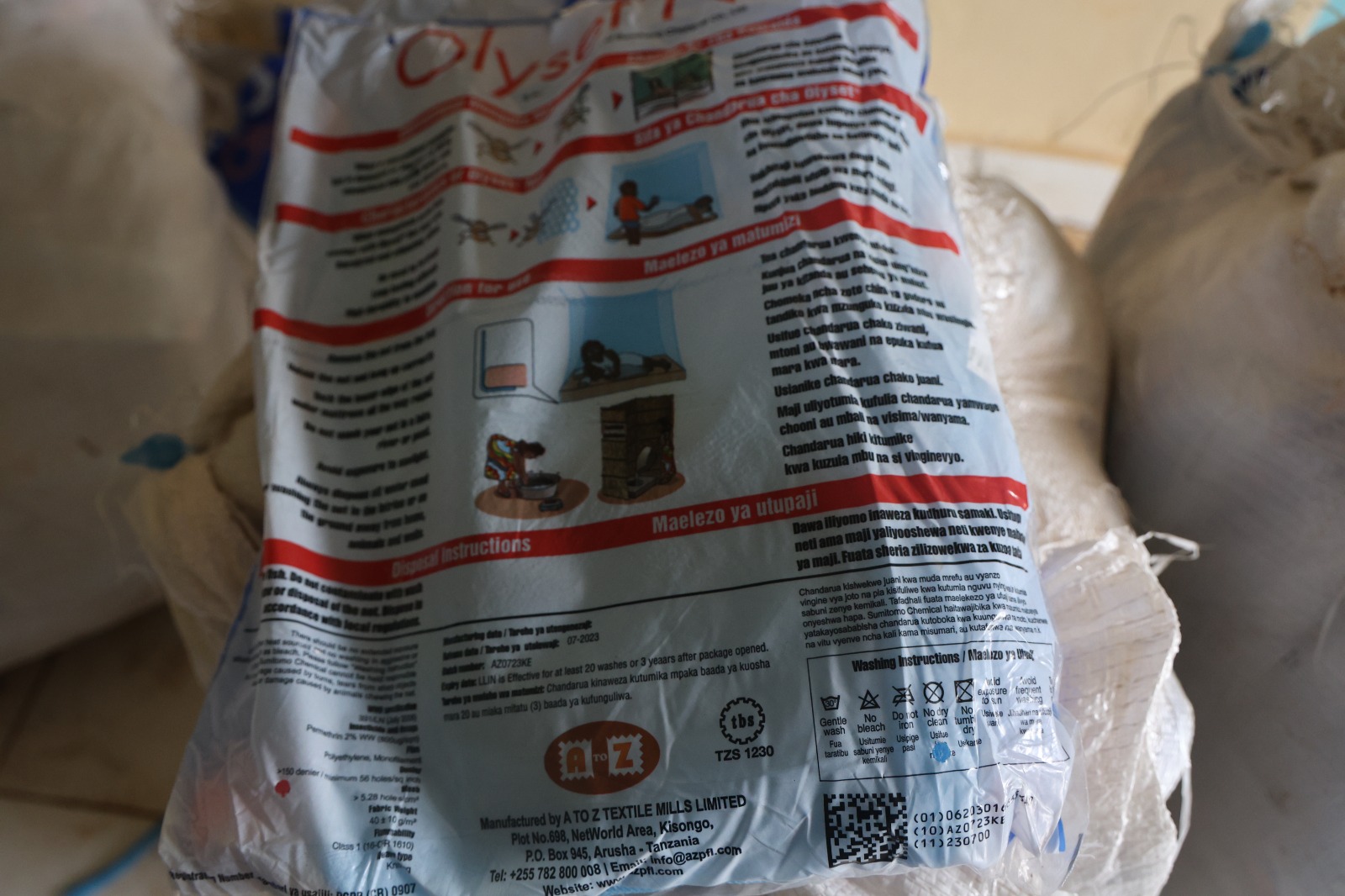
The uncollected mosquito nets were mopped up by the
county teams from various distribution posts and transferred to secure central
stores.
For example, in Mombasa, the Marimani Outreach Centre served as the central store, with a similar process replicated in Kisii and Nyamira counties.
According to Kisii County Malaria Control Coordinator Nixon Aminga, the reverse logistics system has ensured accountability for each net.
“There is no room for malpractices, the system is very clear and elaborate,” said Aminga during an interview at Bonyaoro Community Health Unity, Bonchari sub-location, Kisii county.
“The uncollected nets are picked and brought to a central point with proper documentation. They are also removed from the system and re-entered under the reverse logistics system for redistribution,” he added.
“Sometimes, this process of removing them from the system is challenging but it has to be done,” he said.
Aminga added that most of the time, the exercise requires the distribution post coordinators to be present when nets are being reversed.
According to him, once a registered person collects the net, their details are removed from those waiting hence no one can collect the net twice.
He said the registration and distribution system and the reverse logistics system are interfaced for smooth operations.
The two systems, Aduda said, work seamlessly, allowing for real-time tracking and management of inventory across county stores.
"The interface between the two systems is crucial because it allows us to monitor the number of nets in different county stores and efficiently mop them up for redistribution," Aduda explained.
The redistribution process also involves cross-docking, where nets are transferred from large trailers to smaller trucks for final delivery to new distribution posts.
This method ensures the efficient and timely delivery of nets, especially during last-mile distribution.
So far, nets have been successfully mopped up in Kisii, Nyamira, and all four counties in the Coast Region.

Workers at Nyamusi Sub County hospital, Nyamira County engaged reverse logistics for uncollected mosquito nets/ handout
Last-mile distribution has been completed in Nandi County, and the team is currently working in Kipkelion West Sub-County in Kericho, with Sigowet Sub-County marked as next.
One of the main challenges in the reverse logistics process is ensuring that each mosquito net is individually accounted for.
"Each net has a different batch number, and we must enter each one separately as a unique item," Aduda said.
This adds a layer of complexity, especially in large areas like the four coastal counties, where nets were allocated by ward.
The logistics operation incurs costs, including those for personnel, offloading and loading, fuel, and transportation.
“The malaria team will conduct a cost-benefit analysis to assess the costs involved and ensure the best use of resources,” Dr. Aduda said.
The analysis will ensure that the costs incurred in mopping up and redistributing the nets to additional counties—those not originally included in the list—are justified, he added.
He further explained that before returning any nets or products to Kemsa for redistribution, they must undergo the standard quality assurance process.
During this process, the nets are checked to ensure their packaging is intact.
Any nets with compromised packaging are rejected, while those in good condition are accepted for re-distribution.
Using the digital platform, Kemsa tracks the distribution posts, marking, coding, and order details.
This system ensures that inventory is loaded correctly from county stores, guaranteeing that only the correct quantities and properly packaged nets are sent out for redistribution.
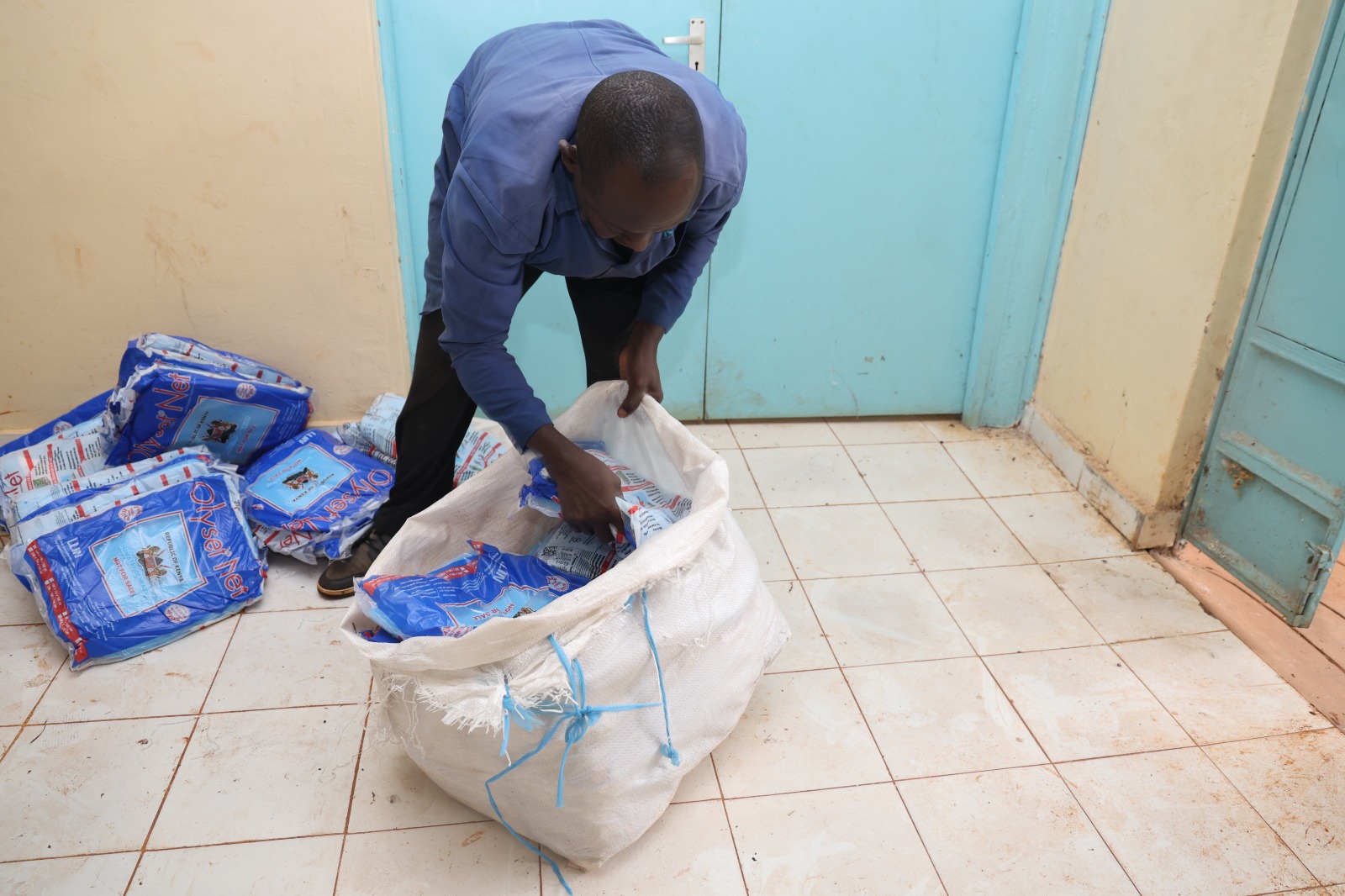
Key achievements
Since beginning the distribution, Kemsa has successfully received a total of 10.9 million LLINs, procured by the Global Fund.
To date, Kemsa has distributed 10.7 million LLINs to various counties.
To safeguard the integrity of the distribution process, Kemsa employed e-locks on all trucks transporting the LLINs.
This measure enhances security and ensures real-time traceability, mitigating risks such as theft or tampering during transit.
